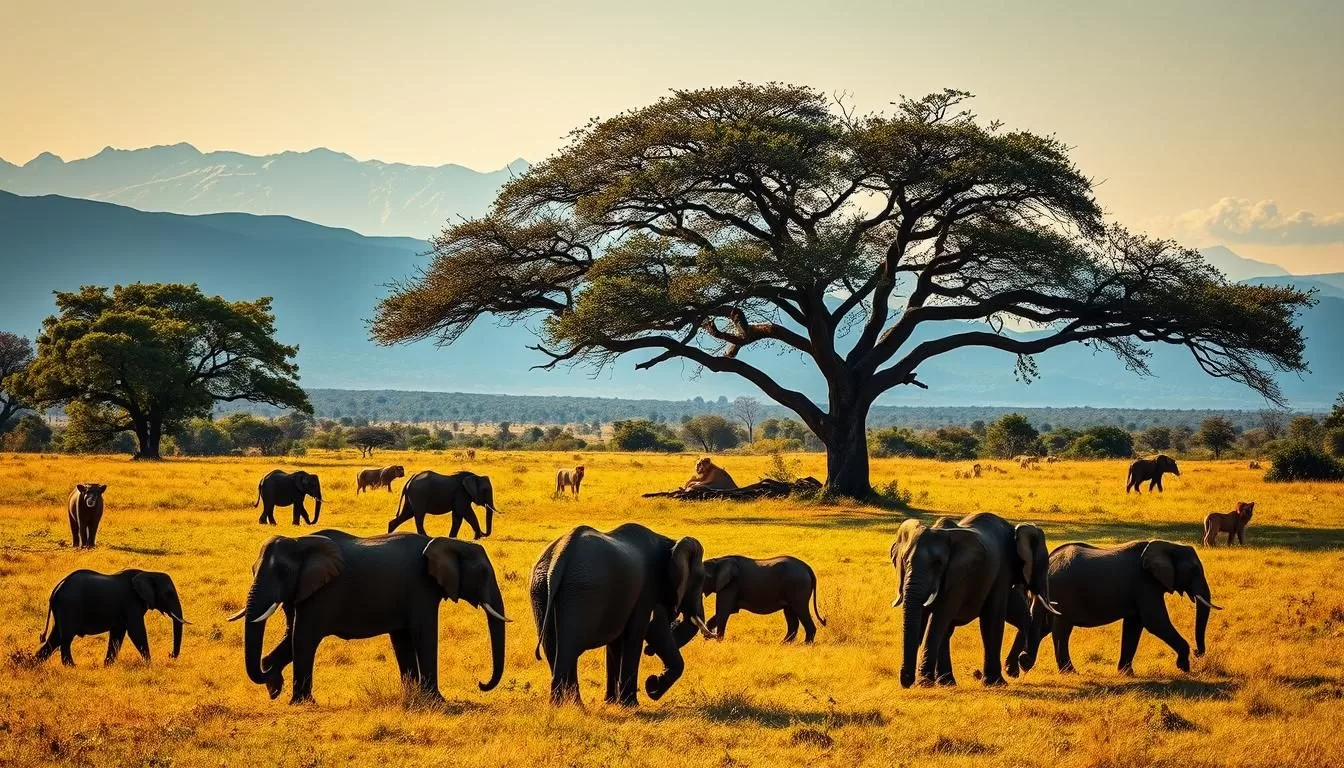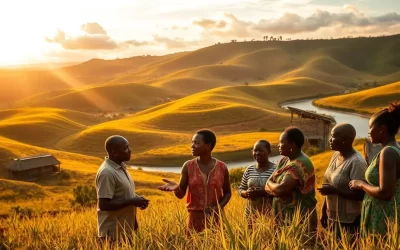When you’re planning to visit Uganda, understanding the country’s distinct dry and rainy seasons is crucial for a memorable experience.
Uganda’s climate significantly impacts travel experiences, with the best time to visit typically falling during the two dry seasons: December to February and June to August.
These periods offer ideal conditions for gorilla trekking and wildlife viewing, making them perfect for your safari adventure.
By knowing the best months to travel, you can tailor your trip to enjoy Uganda’s incredible diversity, from mountain gorilla encounters to classic safari experiences.
Understanding Uganda’s Climate Patterns
When planning a trip to Uganda, understanding the country’s climate patterns is crucial. Uganda experiences two distinct dry seasons (December-February and June-August) and two rainy seasons (March-May and September-November). Despite being on the equator, Uganda’s climate is moderated by its elevation, resulting in relatively mild temperatures year-round.
The country’s climate is characterized by a unique pattern of alternating dry and rainy seasons, rather than the four traditional seasons found in temperate regions. This pattern significantly impacts various aspects of travel and life in Uganda, from road conditions to wildlife viewing opportunities.
- The dry seasons offer ideal conditions for gorilla trekking and other outdoor activities.
- The rainy seasons bring lush landscapes and are ideal for birdwatching.
- Regional variations exist within Uganda, with northern regions typically drier than the southern areas.
| Season | Months | Characteristics |
|---|---|---|
| Dry Season | Dec-Feb, Jun-Aug | Ideal for gorilla trekking, safaris |
| Rainy Season | Mar-May, Sep-Nov | Lush landscapes, ideal for birdwatching |
Understanding these climate patterns is essential for making the most of your trip to Uganda. Whether you’re interested in wildlife, landscapes, or cultural experiences, the season you choose to visit will significantly impact your adventure.
Uganda: Best Months for a Weather-Savvy Trip
To make the most of your Ugandan adventure, it’s crucial to choose the right time to visit. Uganda’s climate varies throughout the year, offering different advantages depending on when you travel.
December to February: Prime Dry Season
December to February is considered the prime dry season in Uganda, characterized by hot, clear days that are perfect for gorilla trekking and wildlife viewing. During this peak period, wildlife tends to concentrate around water sources, making game viewing particularly rewarding in national parks like Queen Elizabeth and Murchison Falls.
| Month | Weather Conditions | Ideal Activities |
|---|---|---|
| December | Hot and dry | Gorilla trekking, wildlife viewing |
| January | Hot and dry | Gorilla trekking, wildlife viewing |
| February | Hot and dry | Gorilla trekking, wildlife viewing |
June to August: Second Dry Season
The June to August dry season provides a second excellent window for visiting Uganda, with mild temperatures and clear skies making outdoor activities comfortable. This period coincides with Northern Hemisphere summer holidays, making it popular with international travelers seeking gorilla encounters and safari experiences.
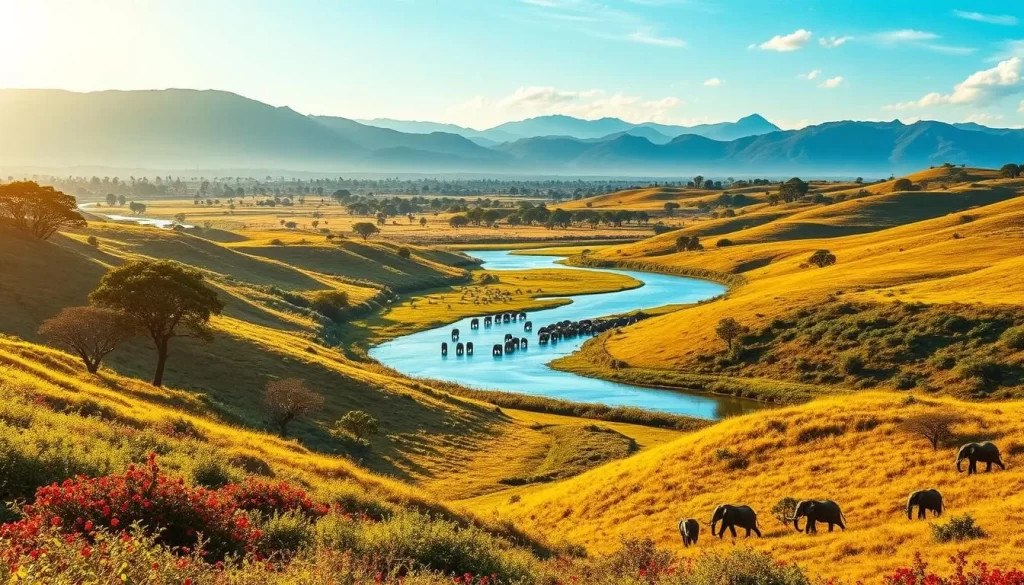
Shoulder Seasons: March and September
The shoulder seasons of March and September offer interesting alternatives with fewer tourists and potential discounts on accommodations and permits. Early March still retains many dry season benefits before the heavy rains begin, while September marks the transition from dry to wet conditions.
Understanding these optimal travel windows will help you align your visit with your personal priorities and expectations, ensuring a memorable and enjoyable trip to Uganda.
Seasonal Wildlife Viewing Opportunities
Uganda’s diverse wildlife is a major draw for tourists, with various species to spot throughout the year. Understanding the seasonal patterns of wildlife viewing can help you plan your trip to make the most of your Ugandan adventure.
Best Times for Gorilla Trekking
Gorilla trekking is a highlight of many Ugandan safaris, and the best times for this activity are during the dry seasons, from December to February and June to August. During these periods, the forest trails are less muddy, making it easier to trek to see the majestic mountain gorillas. This not only enhances your experience but also provides better photography opportunities.
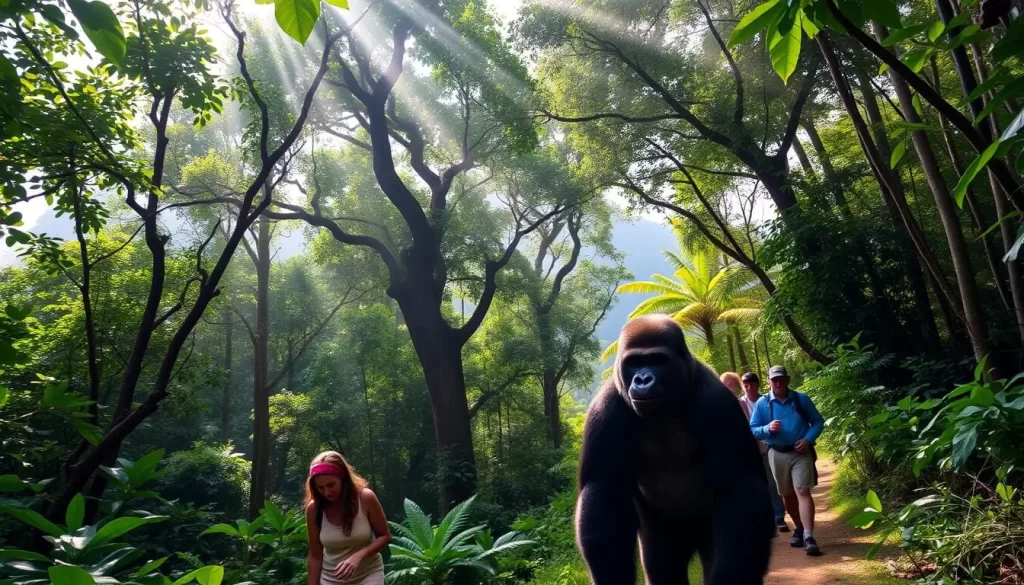
Peak Months for Safari Adventures
The dry seasons, December to February and June to August, are also the peak months for safari adventures in Uganda’s national parks, such as Queen Elizabeth and Murchison Falls. During these times, wildlife congregates around water sources, making it easier to spot a variety of animals, including the Big Five. The thinner vegetation also improves visibility, creating spectacular viewing and photography opportunities.
Birdwatching Calendar
Uganda is renowned for its rich avian diversity, with over 1,000 bird species recorded. The best time for birdwatching is from November to April, when the country is visited by migratory species from the Palearctic and intra-African regions. This period offers a unique chance to see a wide range of birds, making Uganda a premier destination for bird enthusiasts.
Month-by-Month Guide to Uganda
To make the most of your Ugandan adventure, it’s essential to know the best time to visit. Uganda’s climate varies significantly throughout the year, impacting the quality of your wildlife viewing, trekking, and overall travel experience. Understanding the monthly weather patterns can help you plan a more enjoyable and rewarding trip.
January to March: Hot and Increasingly Wet
The first quarter of the year in Uganda is characterized by hot and increasingly wet conditions. January and February offer hot, dry conditions with clear skies, making them excellent months for comprehensive Ugandan adventures that combine gorilla trekking with classic safari experiences. As March begins, the long rainy season starts, bringing more frequent afternoon showers. While the conditions become wetter, the landscapes become lush, and the wildlife is active, making it a great time for nature lovers.
April to May: Long Rainy Season
April and May represent Uganda’s wettest period, with daily downpours that can complicate travel. However, these months reward visitors with lush landscapes, newborn wildlife, and significantly reduced tourist numbers. Many parks remain open, but some roads become challenging, and trekking experiences require greater physical stamina and preparation. The rain also brings a renewal of life, making it a unique time to visit Uganda.
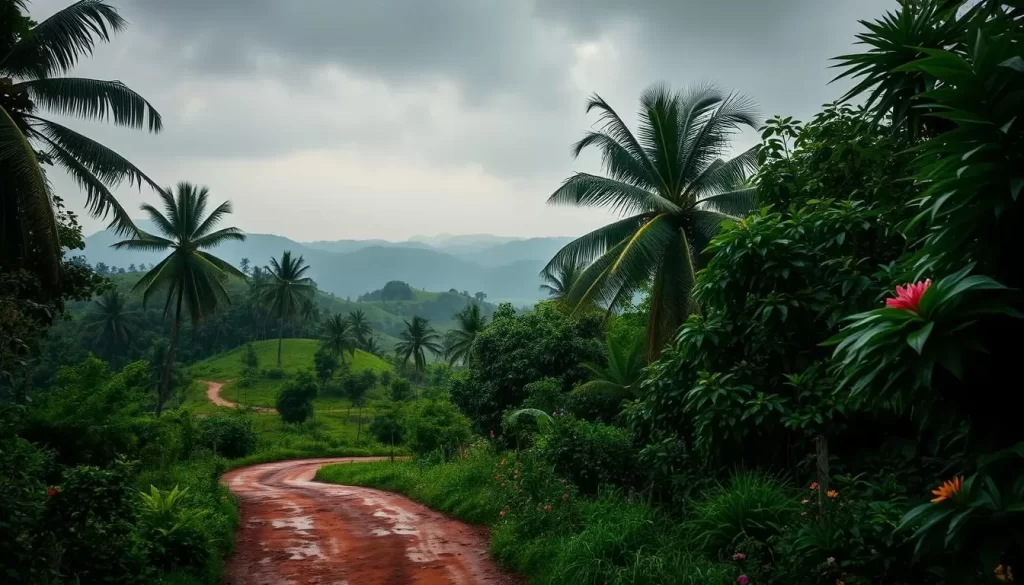
June to August: Dry and Mild
The period from June to August delivers dry, mild weather that creates ideal conditions for all activities, from mountain hiking to wildlife viewing across Uganda’s diverse parks. This mid-year dry period coincides with the Northern Hemisphere summer holidays, making it the busiest and most expensive time to visit Uganda. Despite the crowds, the pleasant weather makes it an excellent season for outdoor adventures.
September to December: Short Rains to Dry Transition
From September to November, Uganda experiences the shorter rainy season, with October and November seeing increasing precipitation that transforms landscapes back to vibrant green. By December, the weather transitions back to dry conditions, offering an excellent month for comprehensive Ugandan experiences. The festive season celebrations add cultural dimensions to wildlife encounters, making it a great time to enjoy Uganda’s natural beauty and cultural heritage.
Weather Considerations for Popular Destinations
To make the most of your Ugandan adventure, it’s essential to consider the weather at popular destinations. Uganda’s climate varies significantly across different regions, impacting the experience at key tourist spots.
Bwindi Impenetrable Forest and Gorilla Habitats
Bwindi Impenetrable Forest, home to approximately half of the world’s remaining mountain gorillas, experiences a unique microclimate with frequent mist and rainfall. The best time for gorilla trekking is during the dry seasons (December-February and June-August) when trails are less slippery.
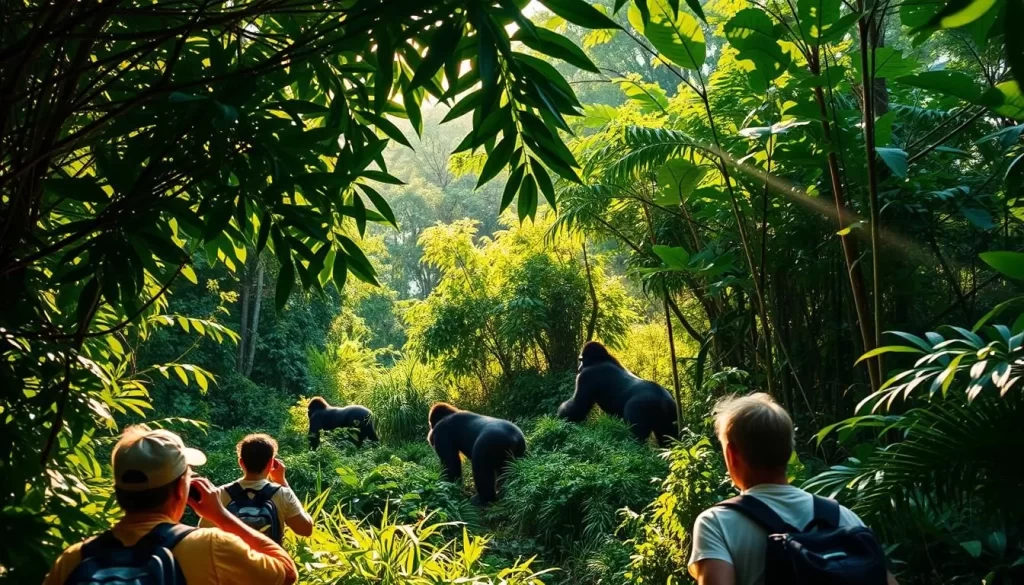
Queen Elizabeth National Park
Queen Elizabeth National Park, Uganda’s most popular safari destination, transforms with the seasons. During dry seasons, the park’s famous Kazinga Channel becomes a wildlife magnet, concentrating game viewing opportunities. The dry seasons (December-February and June-August) are ideal for visiting.
Murchison Falls and Northern Regions
Murchison Falls National Park and northern regions generally experience less rainfall than southern Uganda. This makes them good alternatives during shoulder seasons. The drier climate means they can offer excellent game viewing even during months that might be problematic in southern Uganda.
| Destination | Best Time to Visit | Weather Characteristics |
|---|---|---|
| Bwindi Impenetrable Forest | Dry seasons (Dec-Feb, Jun-Aug) | Less rainfall, clearer trails |
| Queen Elizabeth National Park | Dry seasons (Dec-Feb, Jun-Aug) | Concentrated wildlife around water sources |
| Murchison Falls and Northern Regions | Shoulder seasons | Drier than southern Uganda |
Planning Your Weather-Perfect Ugandan Adventure
To make the most of your Ugandan adventure, consider the best time to visit based on your interests in gorilla trekking, chimpanzee tracking, or classic safaris. Uganda’s diverse climate patterns mean that the dry season offers the most comfortable travel conditions, but also higher prices and greater competition for limited gorilla permits.
By designing an itinerary that combines different regions, such as the northern parks like Murchison Falls, you can maximize wildlife viewing opportunities regardless of when you visit. Shoulder seasons (March and September-November) present compelling value opportunities with fewer tourists and discounted rates.
Remember to pack strategically for Uganda’s variable conditions, including rain gear, and consider working with experienced local operators to navigate seasonal challenges. Ultimately, the best time to visit Uganda depends on your personal priorities, whether that’s optimal weather, budget considerations, or specific wildlife interests.
The above is subject to change.
Check back often to TRAVEL.COM for the latest travel tips and deals.
Here are some Tours & Sightseeing suggestions that might pique your interests!
